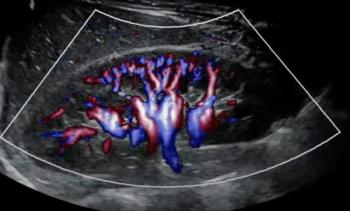
Imaging-in-a-Box
Philips thinks outside-the-box by turning shipping containers into individual CT and X-ray scan rooms.
When is a shipping container not a shipping container? When it is mobile CT or X-ray pod.
In an effort to keep radiologists, technologists, and patients as safe as possible while still conducting necessary imaging for the growing number of patients who are testing positive for COVID-19, radiology vendor Philips is outfitting shipping containers to be used as imaging pods in the Philippines. These units will be mobile and can be placed where they are needed most – within hospitals, on facility grounds, or in the community, company officials said.
Plans are currently in place, according to company details, for officials in the Philippines to begin using these CT and X-ray cabins to triage patients. The individual nature of these pods means that healthcare providers can instantly isolate a patient if their scans point to COVID-19 infection.
Related Content:
“Limiting the chance of cross-infection is especially important during triage, when infected and uninfected patients share the same diagnostic pathway,” company officials said. “When you add in the need to upscale and deploy diagnostic facilities in an agile way to cope with increasing patient numbers and localized COVID-19 outbreaks, it makes sense to find new ways to deploy and install diagnostic solutions.”
Each cabin will be equipped with Philips CT solutions, including Access CT and Incisive CT, or X-ray solutions, including DuraDiagnost and DuraDiagnost F30. Additionally, every cabin will have an integral lead shield to reduce stray radiation, as well as ultraviolet lamps that can be used to sterilize the workspace between patients and a laboratory-grade computer for in-the-moment results analysis.
Everything, company officials said, will be configured to let radiologists conduct diagnostic imaging procedures with as little patient contact as possible.
It is possible, company officials siad, that these pods will have functionality beyond the COVID-19 pandemic. They could also potentially be used for emergency rescue, as well as in disaster relief zones.
Newsletter
Stay at the forefront of radiology with the Diagnostic Imaging newsletter, delivering the latest news, clinical insights, and imaging advancements for today’s radiologists.




























